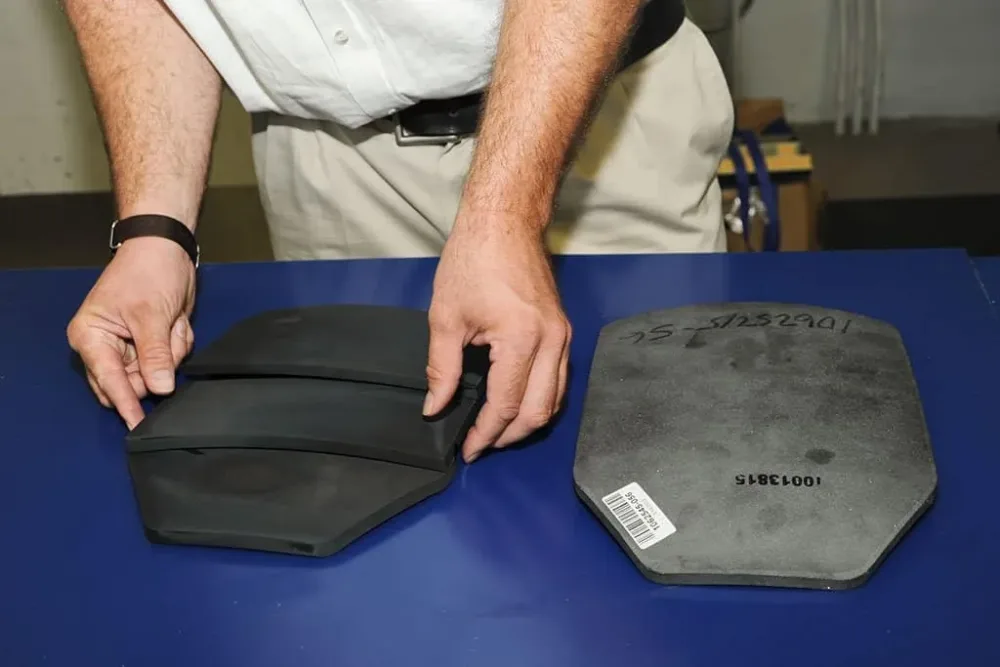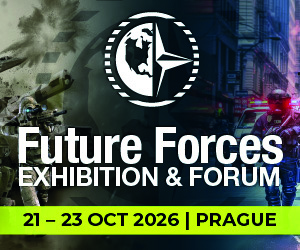Modern body armor consists of an insert, made of strong material, that fits inside a garment such as a vest or plate carrier. Body armor comes in two common varieties: “hard” and “soft.” Hard armor is composed of rigid plates designed to provide protection against rifle threats, while soft armor generally consists of flexible, layered composite or textile panels which offer protection from handgun rounds, fragmentation, and shrapnel.
NIJ 0101.06: Level III and Level IV Armor Specifications
Hard armor plates in the United States are typically rated according to the 0101.06 specification for body armor from the US National Institute of Justice (NIJ). Their two rifle-threat specifications are “Level III” and “Level IV”
What will Level 3 body armor stop? – Rifles:
Designed to withstand six shots of 7.62×51mm NATO M80 ball bullets, weighing 9.6 g (148 gr) each, at a velocity of 847 m/s ± 9.1 m/s (2780 ft/s ± 30 ft/s).
What will Level 4 body armor stop?– Armor Piercing Rifle:
Designed to withstand one shot of a .30-06 Springfield M2 armor-piercing (AP) bullet, weighing 10.8 g (166 gr), at a velocity of 878 m/s ± 9.1 m/s (2880 ft/s ± 30 ft/s).
During testing, both levels of armor are evaluated for residual blunt force trauma by placing the armor plate over a thick clay (Roma Plastilina) backer. If the bullet is stopped by the armor but the indentation in the clay backer exceeds 44mm in depth, the plate fails the test.
The Limitations and Flawed Assumptions of 0101.06
The original intent of the NIJ was for Level III armor to cover all rifle ball threats, whereas Level IV armor would cover all common rifle AP threats. In other words, it was assumed that protection against full-power M80 Ball at up to 2810 fps and .30-06 M2 AP at up to 2910 fps would also suffice to protect against all “lesser” or lower-energy threats in each category. However, this assumption has proven to be flawed.
.30-06 M2 AP at 2910 fps is indeed a potent threat; however, its armor-piercing core is made of 1950s-vintage tool steel with a hardness of approximately 60-62 HRC. Modern AP bullets with much harder and denser tungsten carbide cores – and thus considerably higher sectional densities – can penetrate most Level IV plates. Consequently, the Level IV specification does not imply broad resistance to AP bullets, and “Level IV+” plates, such as the Adept Colossus and LTC 28601, have been developed to stop a wider range of contemporary AP threats.
A more pervasive issue emerged with Level III armor. As it turns out, the M80 Ball is a relatively weak armor penetrator due to its soft core, low jacket-to-core ratio, and mediocre sectional density. Certain other rifle “ball” rounds, like XM193, M855, .270 Winchester, and other common threats, have been known to penetrate Level III armor plates certified solely against M80 ball.
This has led to the unofficial, but exceedingly common, “Level III+” designation. The “plus” in “III+” has no official or universally accepted meaning, but it typically implies that the plate so rated will stop M80 Ball as well as 5.56x45mm M193 and M855. However, this is not always the case. Sometimes, it denotes nothing more than protection against M80 Ball and 7.62x39mm mild steel core rounds. To address this issue, the NIJ has proposed an update to their body armor rating system, under the new “0101.07” draft specification. Although not yet implemented, this specification has been made public and is already in use by armor manufacturers.
NIJ 0101.07: New Draft Specification
The new .07 body armor specification includes three rifle threat levels, with the first level expanded to cover three separate threats, and plates at the second level tested against four:
Rifle 1 – Ball Rounds:
9.6 g (149 gr) 7.62×51mm NATO steel-jacket M80 ball bullets at a velocity of 847 m/s ± 9.1 m/s (2780 ft/s ± 30 ft/s).
7.97 g (123 gr) 7.62×39mm mild steel core bullets at a velocity of 725 m/s ± 9.1 m/s (2380 ft/s ± 30 ft/s).
3.6 g (55 gr) 5.56×45mm M193 BT at a velocity of 990 m/s ± 9.1 m/s (3250 ft/s ± 30 ft/s).
Rifle 2 – Steel Penetrators:
4 g (62 gr) 5.56×45mm M855 BT at a velocity of 950 m/s ± 9.1 m/s (3115 ft/s ± 30 ft/s) Also tested against all threats mentioned in NIJ RF 1.
Rifle 3 – Armor Piercing Rifle:
10.8 g (166 gr) .30-06 M2 armor-piercing (AP) bullets at a velocity of 878 m/s ± 9.1 m/s (2880 ft/s ± 30 ft/s).
Provides at least single hit protection against threats mentioned in RF2 and RF1.
The backface deformation specification remains unchanged and still limited to 44mm across all threat levels.
Whereas NIJ .06 Level III plates were required to stop six shots per plate, RF1 and RF2 plates need to stop just three rounds per threat, thus somewhat reducing their multi-hit performance requirements. RF3 is effectively unchanged from the NIJ’s previous Level IV specification.
Protection Scenarios and Suitability of RF Levels
An RF1 armor plate will reliably stop almost all rifle ball rounds, excluding those with non-mild steel penetrators such as M855 and, in some instances, 7.62x54mmR LPS. As an RF1 plate will consistently stop M193 and XM193, its protective capabilities may well exceed those of some “Level III” plates, which may not effectively stop these threats.
An RF2 plate can stop all RF1 threats, as well as threats with light steel penetrators such as M855 and 7.62x54mmR LPS. Consequently, the RF2 rating provides the most comprehensive interpretation of “Level III+.” This level of protection may be the sweet spot for armor plates intended for domestic and law enforcement use.
An RF3 plate is designed to stop non-tungsten AP rifle threats, like .30-06 M2 AP and 7.62x51mm P61. This level of protection is somewhat curious because it surpasses the protection typically needed in domestic or crime scenarios — AP rifle rounds have never been used in a police officer shooting — however, it doesn’t measure up to the tungsten-cored and DU-cored threats that may plausibly characterize future warfare scenarios. As a result, it may be most suitable to view RF3 plates as RF2 plates with an additional, potentially unnecessary, margin of safety. In other words: They’re not entirely suitable for peer or near-peer conflict, and they’re not quite future-proofed, but they’re more than you’d need for just about any other scenario.
Level Translation from NIJ 0101.06 to 0101.07
Although the NIJ’s expanded and much more granular 0101.07 specification is not yet widely adopted, it is still possible to determine where current “Level III” plates might fit within the new system based on the materials from which those plates are constructed.
Level III armor plates made of steel are likely capable of stopping 7.62x51mm M80 Ball, 7.62x39mm MSC, and 5.56x45mm M855, but they generally cannot withstand impact from M193 or other high-velocity lead-cored threats in .223/5.56mm. As a result, these plates are effectively sub-RF1 and would not qualify for RF1 or RF2 certification status. Given that M193/XM193 and similar high-velocity lead-cored threats in .223/5.56mm are the most prevalent rifle threats in the USA, this classification seems reasonable.
Level III armor plates made exclusively from ultra-high molecular weight polyethylene (UHMWPE) composites are likely capable of stopping 7.62x51mm M80 Ball, 7.62x39mm MSC, and 5.56x45mm M193, but they generally cannot withstand impacts from M855 or other threats with hard steel cores or penetrator tips.
Consequently, these plates fall squarely within the RF1 category. Level III(+) armor plates featuring a ceramic strike face over a fiber composite backer are likely capable of stopping 7.62x51mm M80 Ball, 7.62x39mm MSC, M855, and 5.56x45mm M193, which means that most of them already meet the “RF2” criteria.
However, there is a niche group of ceramic “SRT” plates that are rated to stop 5.56mm and 7.62x39mm threats but are either unable to stop 7.62x51mm M80 Ball or can do so only with backface deformation exceeding the allowable range.
Like steel plates, these particular SRT plates are sub-RF1. Needless to say, should you have any questions about the plates you’re considering, refer to the manufacturer’s data, or contact them directly.
The Importance of Staying Updated
As the 0101.07 specification is implemented, most confusion surrounding hard armor plate levels and capabilities will gradually dissipate. The updated rating system will provide clearer categorization of armor plates based on their ability to protect against specific common threats, enabling end-users to easily make informed decisions when selecting body armor. In this evolving landscape of body armor technology and threat profiles, it is crucial for individuals and organizations to stay updated on the latest advancements and understand the capabilities and limitations of various armor materials and designs. By comprehending the nuances between Level III, Level IV, and the newer RF categories, end-users can make informed choices that ensure the highest level of protection in diverse situations.
About the Author:
Jake Ganor is CEO of Adept – www.ade.pt – a company that develops leading-edge body armor solutions, and other technologies to enhance soldier performance and survivability. His book, Body Armor and Light Ballistic Armor Materials and Systems, is available on Amazon, where it has been the top-selling work in its niche over the past two years. An expanded second edition is scheduled for publication by late 2023.







